Two Brief Essays
Author: Alexander Lowen | Published in: IIBA Clinical Journal - Issue: 1984 - Vol 1 - Num 1 | Date of publication: 1984
Click here to read the article in PDF format ...
Editor’s Note:
The following two brief essays were written by Dr. Lowen between 1956-60. Since they are on the same theme as his major essay[1] in this volume, I felt it would be of value to publish them with it. I think readers will be struck, as I am, with the consistency of themes. Because of their clarity, succinctness, and usefulness in describing bioenergetic analysis, I and my associates have kept copies of these essays available in our office for our patients. While widely circulated over the years, they have never been published.
What is Bioenergetic Analysis?
Bioenergetic analysis is more than a technique for treating emotional disturbances. In fact the technical aspects of bioenergetic therapy, though a significant and major contribution to the treatment of emotional and personality problems, are secondary in importance to the knowledge and understanding which comprise the theoretical basis of this approach. To define bioenergetic analysis, therefore, is to state the fundamental concepts upon which both theory and technique rest.
I think such a statement is important because people tend to confuse the specific techniques a person uses with the understanding that justifies those techniques. I have never followed a routine procedure in working with any patient, which is why I find it so difficult to describe the technical procedures used in my own practice of bioenergetic analysis. Technique or procedure will vary from therapist to therapist. It is my hope, however, that the basic goals and understanding described below are common to all who consider themselves part of this work.
1. The primary concept is Wilhelm Reich’s thesis of the unity and antithesis of all living processes. Reich originally used the term “vegetative functions” in his formulation which extended to include all “living processes”. The unity and antithesis of the body-mind functions is the best example of this concept. This principle implies both a duality and a unity of mental and physical processes. Denying the duality by saying that body and mind are one violates this principle. We respect the duality when we recognize that conscious attitudes have considerable influence on the total functioning of the organism. This allows us to introduce the question of values into any discussion of human behaviour. And, while we are aware that a person’s or a society’s values are often unconsciously determined, we must also know that they can be consciously altered in the interest of a better life.
However, one cannont easily effectuate the necessary changes in conscious attitude by rational argument. Since the roots of our conscious attitudes go deep into the unconscious memories and experiences of infancy and childhood, the early history of the individual must be made conscious. This objective can be achieved in many ways: psychoanalysis, hypnoanalysis, etc. Making this repressed material conscious merely makes it available for conscious manipulation. The history of psychoanalysis shows that repressed material can be used for a better ego adjustment and not necessarily for a healthier and fuller life. Adjustment may strengthen the ego but at the expense of unconscious life processes.
2. A secondary concept, but no less important than the first, is that unity is an organismic phenomenon. This means that no matter how complicated any living organism is it functions on the organismic level as a single cell. Reich postulated this view in his analogy of the bladder. On the deepest level the organismic functions are expansion and contraction, reaching out and pulling in or back, taking in and giving forth. These basic life functions are regulated by what is known as the pleasure principle. They are functions of the total organism, that is, of the organism as a whole. The organ systems also function in this way but their processes do not control the organismic functions but are, rather, dependent on them.
Modern scientific thinking consistently runs counter to this concept. The best example is the recent work done on the “pleasure center” in the brain. Experiments have shown that when electrodes are placed in this area, many animals will stimulate this area by pressing levers that send a small electrical current into it. The avidity with which they seek this intracranial stimulation suggests that the body responds to this stimulation with an increased excitement or pleasure. According to Dr. JH.J. Campbell of the Institute of Psychiatry in London, sensory stimulation has the same effect and works in the same way. Sensory stimulation activates impulses in the pleasure center. In a New York Times article, Campbell says, “It is postulated that an absolutely essential requirement of the animal nervous system is that the pleasure areas of the brain must be kept activated.”
Psychiatrists have known for some time that sensory deprivation leads to hallucination and schizophrenic symptoms. We have all known that man is a pleasure-seeking animal. The discovery that there is a brain center concerned with pleasure does not advance our understanding of pleasure. There is a brain center for respiration but our knowledge of this fact does not help us with problems of disturbed breathing. The nervous system has a regulatory function, not a determining one. We don’t breathe because we have a respiratory center, essential thought it may be a normal respiration. We don’t seek pleasure because of pleasure center needs activation. Life is an excitatory process. The loss of excitation is death. Breathing and pleasure are both necessary to maintain the state of inner excitation or energy charge which is life. How eager we are to grasp at a mechanism as if it held the key to life!
3. If we think organismically, we must think energetically. When I say energetically, I refer to excitatory processes. This is the third principle underlying bioenergetic analysis: namely, that that controlling factors of health and illness are how much energy a person has and how this energy is used by the body. The concept of energy is a quantitative factor. Without this factor any understanding of personality lacks depth. Qualitative factors alone are too superficial.
I shall illustrate the difference with a simple example of a feeling. Anger is the description of a feeling that is not the same for all people and all situations. As such, to say that a patient got angry or released anger is a qualitative statement. One wants to know how much anger, how ell focused and how long sustained. Only an energetic concept permits us to measure the depth of feeling.
Only an energetic concept permits us to evaluate the aliveness of a person. Every person is alive – but how much, how intensely, how well organized? Since our work aims to help a person become more alive, we must understand life as an energetic process. And since breathing is the key to the energy metabolism of the body, it should not be used simply as a device to release some feeling. Releasing feeling is necessary but a deeper and fuller respiration is the real goal of therapy.
In the same way, muscular tensions and rigidities must be viewed energetically. A muscular tension is not a static phenomenon. A tension can be relaxed to allow a certain quantity of energy through, but it will contract to block a larger charge or a greater excitation. Since tensions do not develop overnight, they cannot be released by a single experience. Often a single tension pattern will require consistent work over a long period of time to effect a significant change in behaviour and personality.
4. All the tension patterns of an individual add up to his character structure. If what I have said about single tension patterns is valid, it will be recognized that this structure is extremely resistant to change. At best the changes are quantitative not qualitative. One is stuck with his character structure but it can be more so or less so. On this level any small change i experienced as significant by the person.
Energy, tension and character are interrelated since the total tension pattern controls the amount and use of the body energy. Therefore, bioenergetic analysis is basically a character analytic method of seeing people. One cannot understand bioenergetic analysis if one doesn’t know how the character structure develops and operates. And in my opinion, one cannot do effective bioenergetic therapy if one does not know how to deal with character problems psychologically and physically.
Here again, I must caution against over-valuing feeling. An experience or a feeling with not result in any character change unless it is consciously integrated into the personality and seen in terms of the character. Experiences must be accompanied by insight if they are to have a positive effect upon the personality. The most difficult thing for therapists to learn is character analysis. While it is relatively easy to give a person an experience or even open up a feeling, it is much more difficult to help that person integrate the experience on a characterological level.
Since the character is the sum total of all tension patterns, it is expressed in the form and motility of the body. Reading the body characterologically is the sign of a good bioenergetic therapist. Working with the body characterologically is what distinguishes bioenergetic analysis from other body approaches which do not have the character analytic basis.
5. The fifth principle that underlies bioenergetic therapy is grounding. This concept embraces grounding the person in his body, in his sexuality and in his relation to the earth. An animal is fully grounded in its body since it is completely and naturally in touch with every part of its body. This quality gives its body the grace and coordination that are typical of animal movements. To be grounded in one’s sexuality is the equivalent of Reich’s concept of orgastic potency. And to be grounded in the earth means that energy and feeling can freely flow through the legs into the ground assuring a person of his footing, his standing and his balance. When a person is grounded, he is rooted in the universal processes of nature.
To the degree that an individual is not grounded there is an unreality to his life. He may have certain illusions about himself – who doesn’t? He may try to project certain images. These aspects of unreality in a personality are often very difficult to uncover. Their persistent presence prevents any full grounding from occurring.
I would suggest that the existence of these unrealities can be detected by the lack of humility in a person, by his inability to accept failure, and by his fear of helplessness. The individual who is grounded doesn’t seek to inflate his ego, doesn’t strive for power, and most important, can recognize and accept his basic helplessness as a creature.
If one keeps these five principles in mind, it matters little how one approaches a patient. There is room in the therapeutic armamentarium for every technique. They all work sometimes. No one technique works all the time. What is important is not what we do but how we understand life and the living process including ourselves.
Body and personality
A brief description of bioenergetic analysis.
Bioenergetic analysis is a technique for:
- Understanding the personality in terms of the body
- Improving all functions of the personality by mobilizing the energy bound by muscular tensions
- Increasing an individual’s capacity to experience pleasure by resolving the characterological attitudes that have become structured in the body and that, therefore, interfere with is rhythmic and unitary movements
Every physical expression of the body has a meaning: the quality of a handshake, the posture, the look in the eyes, the tone of the voice, the way of moving, etc. If these expressions are fixed and habitual, they tell a story of past experience. The interpretation of fixed, physical attitudes and the work upon chronic muscular tensions which underlie them add a new dimension of reality to the therapeutic experience.
All distortions and denials of reality are compensated by special body attitudes. For example, the neurotic individual who is afraid of his feelings of fear, covers them by an exaggerated expression of courage which is manifested in a fixed postural attitude. His shoulders are squared off, his chest is inflated and his belly is sucked in. The patient is not aware that his attitude is a defense against fear until he finds that he cannot drop his shoulders, relax his chest or let his belly out. When the muscular tensions are released, the fear and its historical cause often rise to consciousness.
In working with the body, two principles are paramount:
1. Any limitation of motility is both a result and a cause of emotional difficulties. It arises as the result of an unresolved infantile conflict, but the persistence of the tension creates present day emotional difficulties that clash with the demands of adult reality. Very physical rigidity interferes with and prevents a unitary response to situations.
2. Any restriction of natural respiration is both the result and cause of anxiety. Anxiety in childhood situations disturbs natural respiration. If the anxiety-producing situation persists and is prolonged, the disturbance of respiration becomes structured in thoracic and abdominal tension. The inability to breathe freely under emotional stress is the physiological basis for the experience of anxiety in such stressful situations.
Unity and coordination of physical responses depend upon the integration of the respiratory movements and the aggressive moments of the body. To the degree that respiration and motility are freed from the restrictions of chronic tensions, the physical function of the patient will improve. To that degree, his contract with reality on the physical level will expand and deepen. But this will happen only if there is a concomitant and corresponding improvement in his grasp of reality on the psychic and interpersonal levels which are not accompanied by an analogous improvement in his physical functioning.
Through special movements and body positions, the patient in bioenergetic therapy gains a deeper contact with his body and a better feeling for it. From this contact and feeling he begins to understand the relation between his present physical state and the experiences of his infancy and childhood which related it. He learns that his denial of his body is a rejection of his need for love in order to avoid hurt and disappointment. He can interpret his rigidities as a defense against an overwhelming rage. He can sense that this immobility stems from a deepseated fear of aggression. Given the opportunity to express his rage by pounding or kicking the couch, and given the chance to voice his negativity, he discovers that he will not be abandoned or destroyed for expressing his feelings. Through the acceptance of his body and its feelings the individual broadens his contact with all other aspects of reality.
Since the body is the base of all reality functions, any increase in a person’s contact with his body would produce a significant improvement in his self image (body image), in his interpersonal relationships, in the quality of his thinking and feeling, and in his enjoyment of life.
[1] Bioenergetic Analysis | The Clinical Journal of the International Institute for Bioenergetic Analysis | Volume 1 Number 1 Spring 1984









![Two Brief Essays [EN]](/images/Article_EN_Two_Lowen.png)


